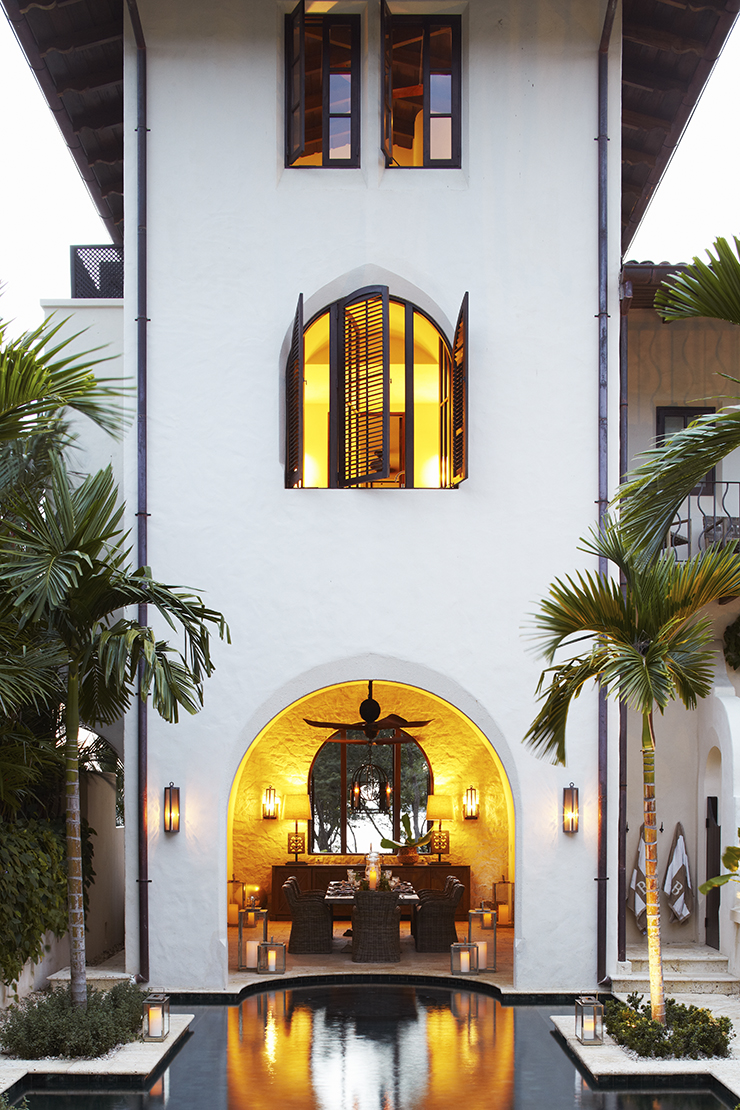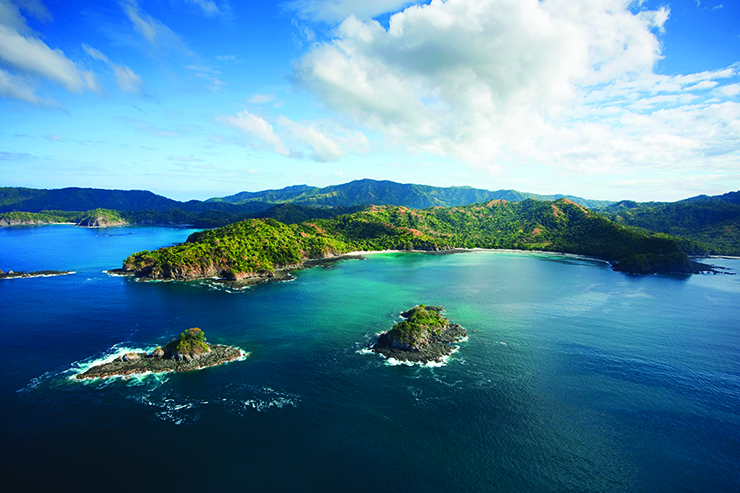By Tali Jaffe Minor
With some trepidation, I shared my plan for our trip to Costa Rica with my husband: “We’ll begin in Guanacaste at a little place called Las Catalinas, ” I say, as though it were another one of the surf shack-dotted towns he was so fond of, and not the secluded, well-appointed, oceanfront community I couldn’t wait to escape to.
To those, like my husband, familiar with the country in the pre-aught decades, you will understand my caution inserting myself (and my luxury-leaning preferences) into the Costa Rica equation. His was an experience where nary more than a mosquito-netted cot would suffice as lodging; where a plastic bag full of just-cured ceviche bought from “the old guy down the road” was dinner; and where currency was based on barter.
So, in Costa Rica’s current state, where foreign investment has drastically altered the landscape, it’s a fine line in the sand one must walk between preservation and progress. Balancing elegantly on that edge—quite literally, we’ll come to find out—is the community of Las Catalinas.
A 40-minute and típico ride (unpaved and at points steep, bumpy and harrowingly narrow) from Liberia Airport in the northwestern state of Guanacaste, Las Catalinas sits on a quiet bay on the beach of Las Dantita, and reaches up the soft-sloping trails, encompassing 150 acres of vista-rich frontage. My guide, Michael Garcia, who is a community director, would later extol how significant this gentle slope was: “Just 10 degrees—made especially for biking,” he explains, proudly adding, “they have been recognized as some of the best in the country.”
When we arrive at the property, exchanging buenas, holas, pura vidas—all interchangeable expressions, you quickly come to realize—with a number of employees and guests, we are given a quick lay of the land. It turns out that Las Catalinas is more than a decade in the making and “about a decade from completion,” explains Mhairi Fournier, hospitality manager. Built in the style of New Urbanism, it is a self-sufficient community striving for little environmental impact and a strong sense of place. Certainly that mission could be lifted from any number of new communities—from Seattle to Panama—but here we find this dialogue, not diatribe, at the center of all conversations.
Take, for example, that literal line in the sand. Edvaldo Brito, Las Catalinas’ director of residences, points out a low, undulating curb that hugs the edge of the sand, widening to encompass native plants in some areas and drought-resistant landscaping in others. “That’s where the public space begins,” says Brito, gesturing toward the westernmost side of the curb, “the beach, the park—it’s public even though it’s surrounded by this private property.”

The rich coast The town of Las Catalinas in Costa Rica embodies a relaxed yet pristine lifestyle, complete with high-end villas and accommodations. Its main mission, though, is to leave as little environmental impact as possible through community outreach programs, such as raising sustainably grown produce in one’s own residences.
What that means is that not only does Las Catalinas welcome its locals to the property—one they are entitled to traverse, in all fairness—it also brings its resources to the locals. “Most recently, our garden team visited a number of homes in the community to build and then teach residents how to tend their own garden beds,” says Brito, who noted most of the vegetables, herbs and fruits used at the restaurant are grown on the property. “We’re doing more than employing the town’s residents here.”
We followed the dividing line up a small hill, past a large and shallow fountain to a cluster of what could have been viewed as Mediterranean villas, with requisite terraces, balconies and at the entrance to ours, a small palazzo.
Our flat, as it’s referred to, was well-appointed: Two deep tubs look like they could soak away the achiest of muscles (perhaps after exploring said bike trails) and, though we had no intention of turning it on, a television levitated up from the sideboard in the bedroom, testing our news stream reliance.
We quickly noticed the thoughtful details that speak to the needs of any discerning beach dweller, including shallow footbaths that are found outside all accommodations—most of which are outfitted with an outdoor shower. The small buildings are terraced, enabling privacy from neighbors who aren’t as far away as one might desire. That is, unless you spring for one of the villas, whose walls afford an interior courtyard into which guests can disappear and remain undisturbed should they choose.
But being the social seekers we are, we headed to Limonada restaurant, Las Catalinas’ canteen and de facto community center. Kicking back on the perfectly deep canvas banquettes, we settled in with a pair of coco-limon frozen drinks and watched the first of our 21 sunsets drop gently and then urgently into the opalescent waters of the Pacific Ocean.
Originally appeared in the Fall 2016 issue.




